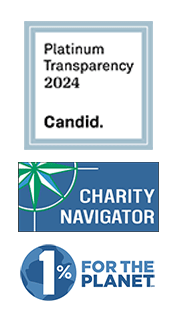in SUPPORT of LD 1185: An Act to Amend the Process for Prioritizing Toxic Chemicals in Children’s Products
Senator Saviello, Representative Hamper and members of the Committee. My name is Matt Prindiville and I’m the Clean Production Project Director for the Natural Resources Council of Maine (NRCM). NRCM strongly opposes LD 1129, and supports LD 1185 as a compromise position.
There has been a great deal of misinformation about the Kid-Safe Products Act floating around the State House and Maine’s business community. I recently got a call from a friend of mine who is a boat builder who told me that he was very concerned about the “product ban” law because he had been told that he wouldn’t be able to use epoxy resins in his shop anymore. I had to reassure him that he had nothing to worry about and sent him the legislation, and pointed out where transportation and industrial uses were exempt, which immediately calmed him down.
I also explained how the law works, essentially the state’s experts on chemical toxicity review the science and bring proposals to the Board of Environmental Protection – and subsequently the legislature – to restrict the most hazardous chemicals that threaten children’s health in consumer products. Only the Maine Legislature has the authority to restrict the use of toxic chemicals in consumer products, and only if safer alternatives are found that are comparable in performance, widely available and cost-effective.
He said that “makes a lot of sense,” which is the response from most folks when I explain how the law works. So there are some clear misperceptions out there regarding the law, and I understand that perceptions are important. Given the recent attempts by the chemical industry and some of the consumer product trade associations to stir up opposition to the law, I wish that I taken the time to go to the local chambers and explain how the law works. Some of these misperceptions may have been avoided.
Now we don’t think that the law is broken, and if you read today’s Bangor Daily News and Brunswick Times Record editorials, which I’ve attached, neither do they. I’m going to quote the BDN. Here’s the beginning of the editorial: “A few days after a legislative panel unanimously voted to adopt the Board of Environmental Protection’s ruling that BPA should be banned in children’s products, lawmakers will hear testimony to gut the law that made the BPA action possible. There is no reason to do this.” And here’s the end: “Friday’s vote indicates that the Kid-Safe Products Act works. In the absence of a real problem, lawmakers shouldn’t rewrite it.”
We actually think the law needs strengthening. We would like to see multiple priority chemicals designated each year, alternatives assessments being done and appropriate product restrictions moving forward to the Legislature. There are no mandates in the bill to drive this and as the BDN editorial further points out, “The Department of Environmental Protection, the governor and the state health director under the Kid-Safe Products Act have wide latitude with regard to priority chemicals. It is perfectly legal for them not to consider action on any additional chemicals for years.” We think that this is a significant problem, and given the recent remarks by the chief executive and testimony from Commissioner Daryl Brown, last week, where he laid out the administration’s position that markets should essentially regulate toxic chemicals, and that the law should ignore the science around exposure and only deal with toxic chemicals if they’re found in toys, we have a low level of confidence that they will take further action to protect Maine families.
So where are we at? The Maine Chamber of Commerce, in-conjunction with many of the large chemical and consumer product trade associations have raised concerns about the implementation of the law, specifically that the List of Chemicals of High Concern (If you want further explanation about this list, please read the foot note 1) of this list is too broad and lengthy, and that industry does not know which chemicals could be considered next.
This bill seeks to address and reduce concerns from the business community by narrowing the scope of chemicals considered for regulatory scrutiny to between 10 and 50 chemicals based upon similar listings of other authoritative agencies or demonstrated potential to exposure children to that chemical from its use in consumer products.
NRCM believes that the law is working well as it is written, and should be significantly strengthened (there’s only 2 priority chemicals!) or left alone unchanged. If the Committee wants to fine tune the law, then LD 1185 is a reasonable compromise between gutting the law (LD 1129) and leaving it alone. In order to decrease perceived opposition to the law, we are supportive of this compromise position.
________
[1] There has been some misunderstanding in the Legislature and from parts of Maine</place /></state />’s business community about the List of Chemicals of High Concern, and how the law works in general. The statutory language directed Maine CDC and DEP to create a “list of lists” of all the carcinogens (cancer-causing), developmental and reproductive toxicants, persistent-bioaccumulative-toxic chemicals, and very persistent, very bioaccumulative chemicals that have been identified by other credible government agencies in the US</place /></country-region />, the European Union and by international bodies. Additional guidance was made specific by the 2008 Committee on Natural Resources. The List of Chemicals of High Concern was intended to reduce the universe of chemicals considered from 80,000+ in the US</place /></country-region /> chemicals inventory to a more manageable number based upon the science demonstrating hazard. CDC and DEP published their initial list in June of 2009. This list contained 1,750 chemicals based upon review and compilation of the other lists outlined in statute. There is no regulatory authority granted to DEP with the List of Chemicals of High Concern. It is merely a “list of lists,” and an interim step in the process. It is the next steps in the process that are most important – that of the state’s experts on chemical toxicity bringing proposals to designate priority chemicals for regulatory scrutiny to the Board of Environmental Protection (BEP), with proposed restrictions on the use of priority chemicals needing to be approved by BEP and then the Legislature.











